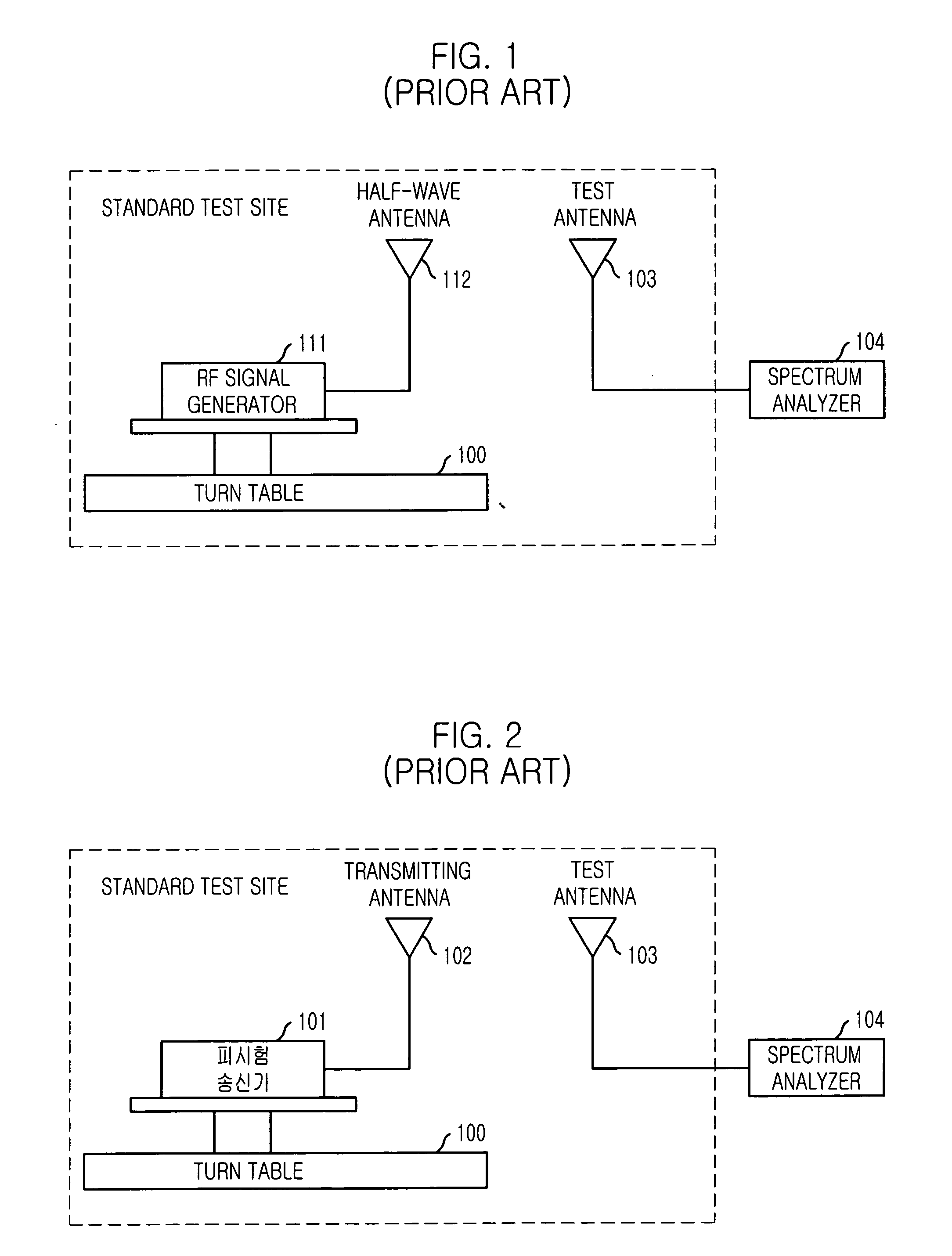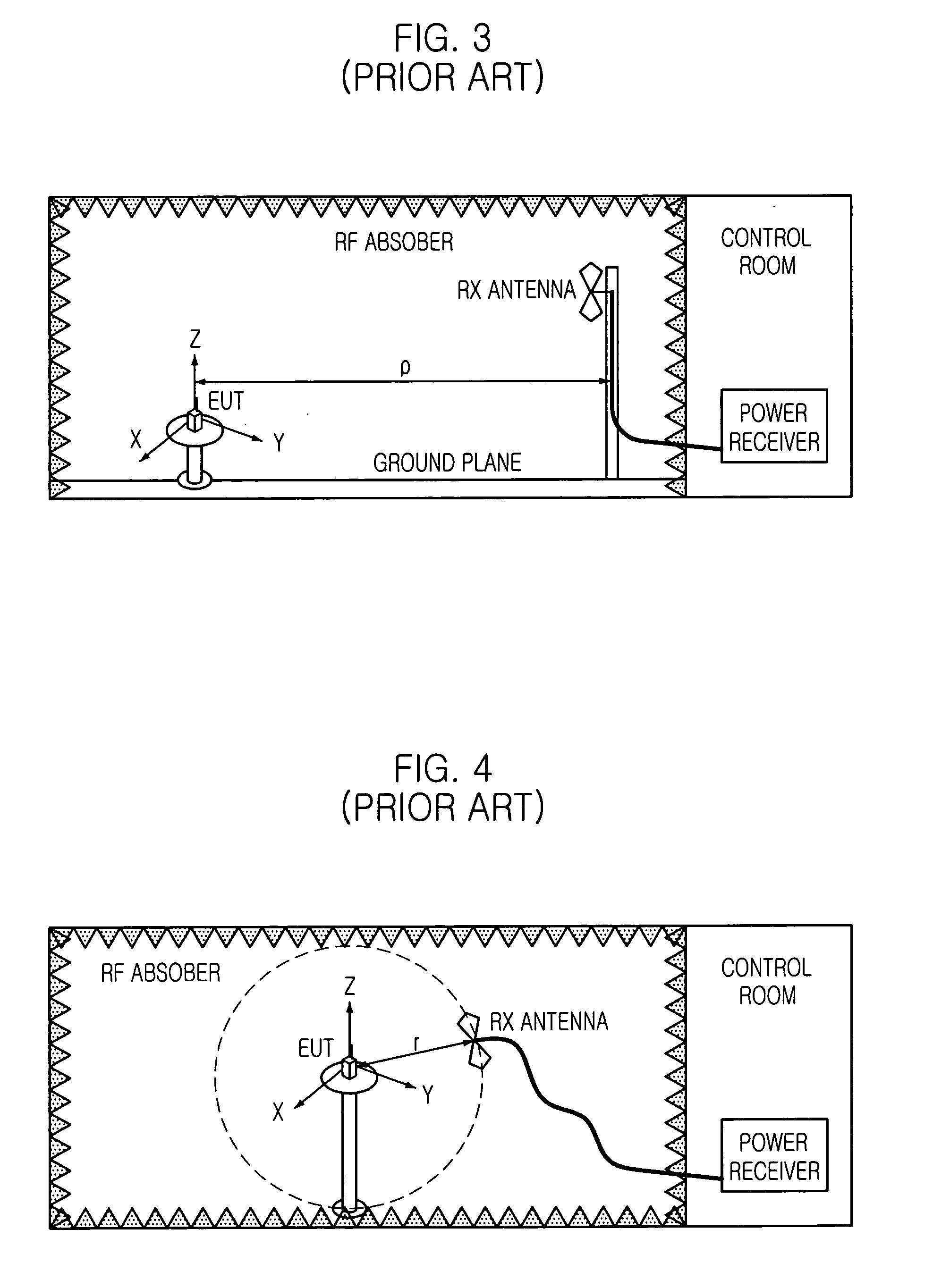Method for measuring electromagnetic radiation pattern and gain of radiator using tem waveguide
a technology of electromagnetic radiation and gain, applied in the direction of transmitter monitoring, instruments, transmission monitoring, etc., can solve the problems of high maintenance fee for the standard test site, large measurement error rate, and long time consumption
- Summary
- Abstract
- Description
- Claims
- Application Information
AI Technical Summary
Benefits of technology
Problems solved by technology
Method used
Image
Examples
Embodiment Construction
[0024] Other objects and aspects of the invention will become apparent from the following description of the embodiments with reference to the accompanying drawings, which is set forth hereinafter.
[0025]FIG. 5 is a diagram illustrating a radiation pattern and gain measurement system using TEM waveguide to which the present invention is applied.
[0026] In order to overcome problem of the conventional measuring method, for the EMI measurement, there are many tries that the measurement on the ground is replaced with measurement in transverse electric and magnetic (TEM) waveguide. Some of the measurements in TEM waveguide are standardized by international special committee on radio interference (CISPR).
[0027] The TEM waveguide means a device transferring the TEM mode, e.g., TEM cell, Gigahertz Transverse ElectroMagnetic cell (GTEM cell), and has at least one port.
[0028] In the present invention, since it is used a power of one port of the TEM waveguide, and a various kinds of TEM wav...
PUM
 Login to View More
Login to View More Abstract
Description
Claims
Application Information
 Login to View More
Login to View More - R&D
- Intellectual Property
- Life Sciences
- Materials
- Tech Scout
- Unparalleled Data Quality
- Higher Quality Content
- 60% Fewer Hallucinations
Browse by: Latest US Patents, China's latest patents, Technical Efficacy Thesaurus, Application Domain, Technology Topic, Popular Technical Reports.
© 2025 PatSnap. All rights reserved.Legal|Privacy policy|Modern Slavery Act Transparency Statement|Sitemap|About US| Contact US: help@patsnap.com



